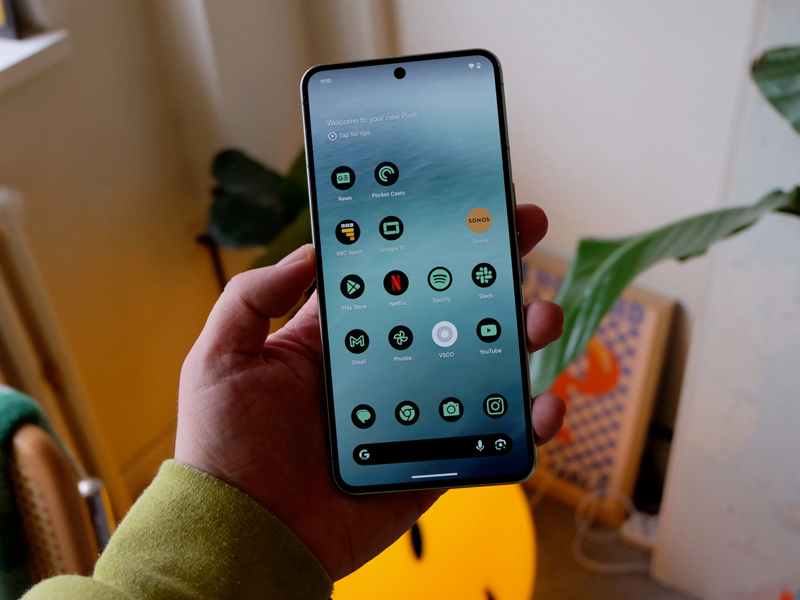Android 15: Is Your Phone the New PC? Exploring the Desktop Mode Makeover

Mobile Technology
A History of Android’s Desktop Mode: A Humble Beginning
Desktop mode has existed in Android for a while, dating back to Android 10. However, it was primarily designed for developers to test apps on larger displays. It offered a basic interface with limited functionality, more of a mirrored phone experience than a true desktop replacement.Android 15: A Desktop Mode Renaissance?
Recent leaks and rumors suggest a significant overhaul for desktop mode in Android 15. Here’s what we might see:
Enhanced Window Management
The ability to freely resize and move windows could mimic the functionality of a traditional desktop environment.Multitasking Powerhouse
Imagine running multiple apps simultaneously on your connected display, boosting productivity.Improved App Compatibility
Apps might be better optimized for the larger screen, enhancing the desktop experience.Mouse and Keyboard Support
Seamless mouse and keyboard integration is crucial for a desktop-like workflow. While details are still scarce, these potential upgrades hint at a more robust desktop mode that could genuinely challenge traditional computers for specific tasks.Can Your Phone Really Replace Your PC? Here’s What to Consider
The potential benefits of a powerful desktop mode on Android 15 are undeniable:Increased Portability
Imagine ditching the laptop and tackling basic tasks like email, web browsing, and document editing on your phone.Enhanced Productivity
Multitasking on a larger screen with improved window management could boost productivity for on-the-go users.Convenience and Streamlining
Consolidating your computing needs onto one device simplifies your digital life. However, there are limitations to consider:Processing Power
While phones are becoming more powerful, they might still struggle with demanding tasks like video editing or high-end gaming.Software Compatibility
Certain software essential for professional workflows might not be available on mobile platforms.Storage Capacity
Juggling large files and applications could strain your phone’s storage limitations. Ultimately, a phone-as-PC scenario in Android 15 might be ideal for specific use cases and users who prioritize portability and convenience. But for power users and professionals, a traditional computer might still be irreplaceable.The Future of Mobile Computing: Beyond Android 15

Image Source: 9to5Google
The potential desktop mode improvements in Android 15 represent a significant step forward for mobile computing. Here’s what this might mean for the future:A Converging Landscape
The lines between smartphones and traditional computers could continue to blur, creating a more versatile mobile computing experience.Focus on User Needs
Mobile operating systems like Android might prioritize features and functionalities that cater to desktop-like workflows.Innovation and Competition
This shift could spark further innovation in mobile hardware and software, leading to even more powerful and versatile smartphones. While the Android 15 desktop mode might not completely replace your PC just yet, it represents a glimpse into a future where smartphones become more capable and versatile computing tools. As technology continues to evolve, the boundaries between phones and computers could become increasingly fluid, offering users a wider range of options for their computing needs.Frequently Asked Questions?

01
AI & ML
Google Search Goes Visual: Search by Uploading a Video!
May 15, 2024

01
AI & ML
President to Announce $3.3 Billion Investment for AI Data Center by Microsoft
May 14, 2024

01
Tech news
iOS 18: A Sneak Peek at Apple’s Next Big Update
May 13, 2024

01
Cybersecurity
Did Dell’s Data Breach Expose Your Information? Here’s What to Do
May 11, 2024
SUSBSCRIBE TO OUR NEWSLETTER
Join our subscribers list to get the latest news and special offers.
Google Search Goes Visual: Search by Uploading a Video!
President to Announce $3.3 Billion Investment for AI Data Center by Microsoft
iOS 18: A Sneak Peek at Apple’s Next Big Update
Microsoft’s New Web-Based Mobile Gaming Store